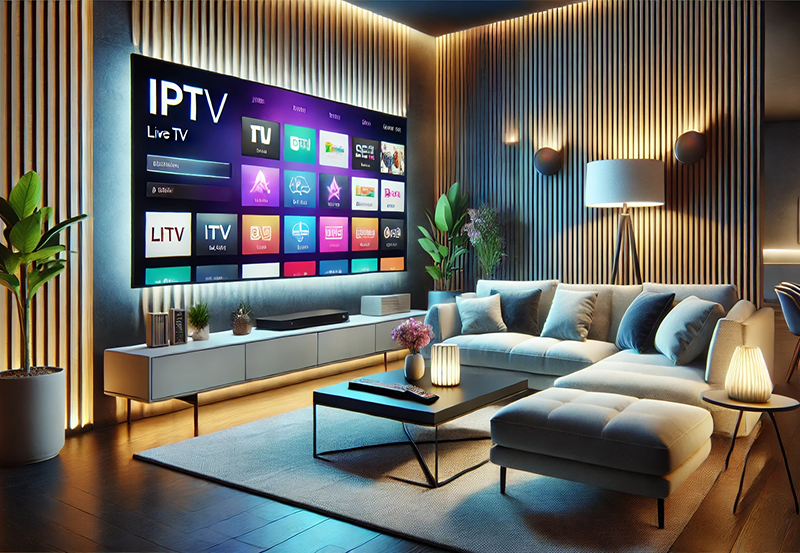Welcome to the world of seamless IPTV streaming, where your experience can be blissful or often disrupted by unexpected failures. Adjusting your router settings may seem daunting, but it can hold the key to preventing those annoying IPTV crashes. In this article, we’ll walk you through the process, ensuring you enjoy the best IPTV for sports, minimizing disruptions, and enhancing your entertainment experience.
Buy 1 Year IPTV Subscription and Enjoy Unlimited Content
Understanding the Basics of IPTV
Before diving into router adjustments, it’s crucial to grasp what IPTV is and why a solid connection is essential. IPTV, or Internet Protocol Television, allows viewers to access television services via the internet rather than traditional satellite or cable formats. With services touting features like “Best IPTV for sports,” understanding the technology behind these services can lead to better performance.
People often choose IPTV for its flexibility and the abundant selection of channels, including HD sports channels and international offerings. However, without proper settings, IPTV can sometimes falter. Performance issues usually stem from network instability, something modifiable with the right router settings.
IPTV Services on the Rise
The talk of the town in entertainment services is indeed IPTV. Various top IPTV services boast features tailored for diverse audiences, from sports aficionados to drama enthusiasts. Without clarifying which service is actually best, let’s just say that knowing how to tweak your settings is a universal key to better IPTV functionality.
Adjustments can mean the difference between an uninterrupted viewing marathon and frustration-driven device hurling. Introducing yourself to the intricacies of routers and settings, makes for a healthy relationship with productivity and output from top IPTV services.
Router Settings: The Hidden Hero
A router is often an unsung hero in a smooth IPTV setup. While most people assume issues are service-related, router settings dictate a lot of performance outcomes. Higher speeds, improved bandwidth allocation, and reduced lag are all there for the taking. Just get those settings right!
Routers come pre-configured, which usually suffices for basic internet usage. However, streaming IPTV demands additional power. By adjusting certain parameters, you can elevate your IPTV viewing journey to a new level of satisfaction and reliability.
Prioritizing Bandwidth for IPTV
Setting up Quality of Service (QoS) can assist in prioritizing IPTV data flow over other types of traffic. This can alleviate lag and buffering during intense sports events or popular broadcasting times. The ability to watch the best IPTV for sports with a smile ultimately depends on these behind-the-scenes tweaks.
- Access your router’s dashboard through a web browser.
- Navigate to the QoS settings – sometimes labeled under “Advanced” or “Traffic Management.”
- Add your IPTV device or service to the priority list.
- Save changes and reboot the router to apply.
Adjusting Signal Strength and Channels
Another effective method to combat IPTV crashes involves adjusting signal channels. Router signals may overlap with other devices in your neighborhood, weakening performance. By selecting less busy channels, a stronger, more reliable connection can be achieved.
Some routers offer automatic channel selection. Still, manual adjustment can sometimes yield the best results due to environmental considerations and surrounding interference.
Exploring Advanced Router Configurations
For those who wish to delve a little deeper, there are advanced configurations that can greatly impact IPTV performance. Specifically, firmware updates, IP bindings, and dual-band usage are notable.
Keeping your router’s firmware up-to-date ensures optimal performance and security. Most devices can perform this task automatically; others require a manual approach outlined in their respective guides.
Understanding Dual-Band Routers
The introduction of dual-band routers, supporting both 2.4GHz and 5GHz frequencies, offers IPTV viewers more options. Assigning devices to appropriate bands can alleviate congestion and enhance the reliability and speed of these connections.
It’s often recommended to designate less demanding devices to the 2.4GHz range, preserving the 5GHz bandwidth for performance-centric devices like those streaming IPTV.
Safeguarding Your Network for Maximum Uptime
While optimizing your settings is crucial, safeguarding your network through security practices can prevent unwanted intrusions and maintain IPTV performance. Securing your network with strong password protocols and using encryption are fundamental steps.
Investing in a Virtual Private Network (VPN) can provide an additional layer of security. This not only protects your data but can optimize access to geolocks that some IPTV content imposes.
IP Address Binding For Stability
Binding your IPTV device’s IP address within the router settings can result in a more stable environment, reducing unnecessary IP conflicts. While slightly technical, many resources online can directly guide through these processes.
Setting static IPs is simplified with router interfaces nowadays. This ensures your device maintains the same IP, allowing smoother prioritization and network management.
Troubleshooting Common IPTV Issues
Even with perfect settings, issues can sometimes arise. Addressing them quickly can make all the difference between frustration and enjoyment. Simple steps often solve complex problems.
Begin by assessing whether the issue resides with the IPTV service, your network, or specific hardware components. This process of elimination can save significant time and effort.
Network Testing and Diagnostics
Running network diagnostics to assess speed and stability should be a primary step once issues emerge. Numerous online tools can measure your upload/download speeds, pinpointing potential bottlenecks.
Consistency testing over different times of day can highlight issues related to network congestion, guiding more targeted adjustments or discussions with service providers.
Restarting Devices for Quick Fixes
Occasionally, a simple restart can solve otherwise perplexing issues. Devices sometimes need reset cycles to flush cached data, recalibrate settings, and resume normal functionality.
This includes the IPTV device, your router, and even the external modem. Each may contribute to the problem at hand, requiring sequential restarts to resolve.
Conclusion: Embrace the Power of Control
IPTV represents a shift in how we consume media. With that shift comes the necessity to adapt technically. Empower yourself through understanding and modifying router settings to enjoy the best IPTV for sports and high-demand content. These small steps are gateways to a smooth and satisfying viewing experience.
Remember, technological proficiency is not just for the IT-savvy. With a few adjustments, anyone can elevate their IPTV viewing journey, transforming technology from a hurdle to be overcome into a tentpole of entertainment efficiency.
Frequently Asked Questions
What is the best IPTV for sports?
Choosing the best IPTV for sports depends greatly on personal preferences such as channel selection, reliability, and customer reviews. Key features to consider include clarity, buffering speeds, and the flexibility of sport-specific channels.
How can I improve my IPTV connection?
Improvement hinges on various factors. Begin with ensuring your network settings are optimized. This includes prioritizing IPTV traffic, using less crowded channels, and safeguarding your network to avoid interference.
Do I need a separate router for IPTV?
While a separate router isn’t typically necessary, ensuring your current router supports advanced features such as QoS, dual-band capabilities, and has recent firmware can benefit IPTV performance.
Can a VPN affect IPTV Performance?
Yes, a VPN can both positively and negatively affect IPTV performance. While it may provide access to geo-restricted content and ensure security, it can also introduce latency. Ensure the VPN’s servers are fast and reliable.
Why is my IPTV buffering constantly?
Frequent buffering may be due to insufficient bandwidth, high network traffic, or poor service settings. Diagnostic checks on speed and congestion can often point you toward a solution.
What steps should I take if my IPTV crashes?
On experiencing a crash, try restarting your devices, clearing temporary files, or performing updates. If issues persist, delve deeper into router and IPTV settings to further assess the root cause.
Do all routers support IPTV services?
Most modern routers do support IPTV services, but performance can vary. It’s recommended to check for routers with functionality geared towards streaming, offering features required for top IPTV service performance.
Common Technical Problems Leading to IPTV Stream Buffering





